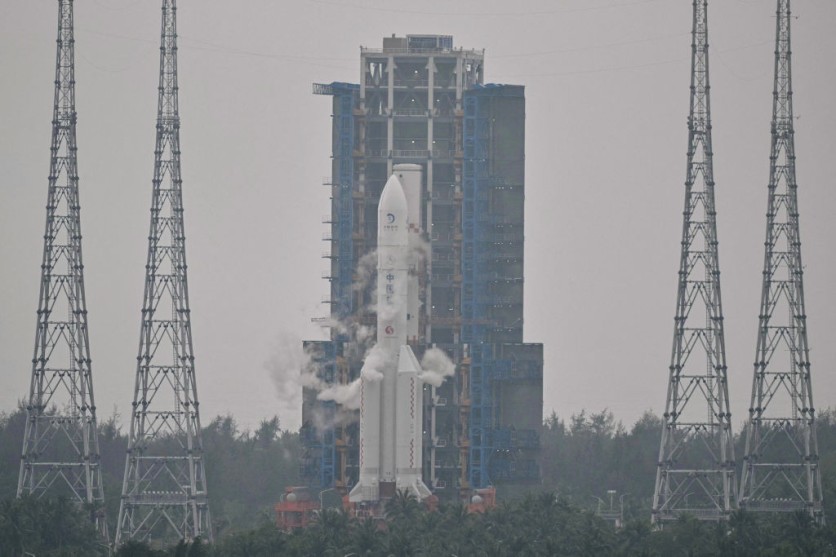The China National Space Administration stated that a Chinese spacecraft landed on the moon's far side Sunday to collect soil and rock samples from the less-explored region.
The landing took place in the enormous crater known as the South Pole-Aitken Basin at 6:23 a.m. Beijing time, as reported by AP News. This is the sixth Chang'e lunar exploration mission, named after the Chinese moon goddess. After Chang'e 5, which returned samples from the near side in 2020, this mission is the second to transport samples to Earth.
China's moon program highlights its rising space competition with the US, Japan, and India. It aims to land a human on the moon by 2030. Notably, China frequently deploys astronauts to its space station.

US Lunar Mission Facing Challenges
The US aims to send humans to the moon by 2026, after the Apollo 11 mission in 1969. Though, spacecraft launches by the private sector have faced delays. Computer glitches stalled Boeing's maiden astronaut flight, while a Japanese tycoon postponed his lunar orbit plan due to SpaceX's significant rocket development uncertainty.
China's lander will drill and use a mechanical arm to retrieve up to 2 kilos (4.4 pounds) of lunar material over two days. An ascender in a metal vacuum container will deliver the samples to an orbiting module. The capsule should arrive in Inner Mongolia, China, on June 25.
Here's the a video of the Chang'e 6's successful lunar landing:
The moon's far side requires a relay satellite for direct connection with Earth, making missions difficult. Landing is difficult on rough terrain.
The South Pole-Aitken Basin, an old impact crater, is 13 kilometers (8 miles) deep and 2,500 kilometers (1,500 miles) wide. It may disclose debris expelled from far beneath the moon's surface as the oldest and biggest crater.
US-China Space Race Intesifies
In January, National Defense magazine reported a strategy document stating that the US and China are in a new space competition and Washington must secure cislunar freedom of operations.
The cislunar zone, where Earth and Moon's gravity affect space, has scientific, economic, and national security benefits. In its policy paper, "Securing Cislunar Space and the First Island Off the Coast of Earth," issued Jan. 17, the Mitchell Institute for Aerospace Studies emphasized that this area is crucial to the US-China great power struggle.
The study noted that China's People's Liberation Army's activities and ideology reflect its desire to dominate space. The document stated that China's lunar exploration program leader compared the Moon to disputed Western Pacific islands, implying a belligerent approach.
At the report's launch, Mitchell Institute senior resident fellow for space studies Charles Galbreath said China had "expanded territorial claims" and deployed "covert militarization, coercive diplomacy, and aggressive behavior" in the Western Pacific. This should not happen on the moon, he said.
China and Russia announced their intentions to establish the International Lunar Research Station in 2021. International partners are welcome at the moon station, but due to fragile relations with both nations, the US is unlikely to join. Beijing is also developing alliances, obtaining partnerships and financial investments in Middle East and Latin American initiatives, and recruiting 12 international ILRS members, per The Guardian.
Techtimes previously reported that Roscosmos and the China National Space Administration started building a nuclear power plant for a joint lunar base. Russia is reportedly developing a "space tugboat" that will carry heavy cargo to the moon.
The United States is gathering friends to stop China from dominating space, per After China revealed its moon landing plans, President Joe Biden and Japanese Prime Minister Fumio Kishida committed to sending a Japanese astronaut to the moon on NASA's Artemis missions in 2028 and 2032.
Related Article : NASA Welcomes Peru and Slovakia in the Artemis Accords

ⓒ 2025 TECHTIMES.com All rights reserved. Do not reproduce without permission.




